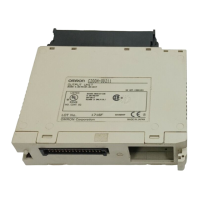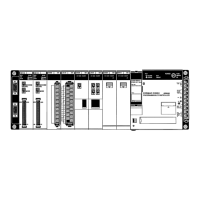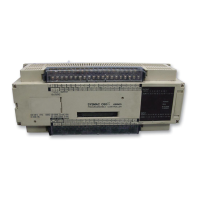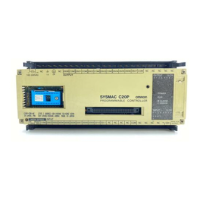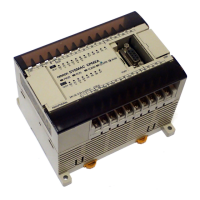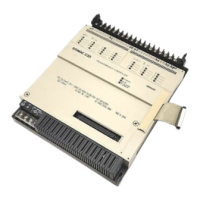198
Flags ER: Incorrect digit designator, or data area for destination exceeded.
Indirectly
addressed DM word
is non-existent. (Content of
∗
DM word is
not BCD, or the DM area boundary has been exceeded.)
Example In
the following example, the 2
nd
byte of LR 10 and the 1
st
byte of LR 1
1 are
con
-
verted to hexadecimal values and those values are written to the first and se-
cond bytes of IR 010.
@HEX(––)
HR 10
LR 10
00000
010
Address Instruction Operands
00000 LD 00000
00001 @HEX(––)
LR 10
HR 10
010
3 1 3 0LR
10
4 2 3 2
Conversion to
hexadecimal
LR 1
1
0 0 2 1010
3 5 3 4
LR 12
0 1 1 0HR 10
5-18-12 SCALING – SCL(––)
S: Source word
IR, SR, AR, DM, HR, TC, LR, #
Ladder Symbols Operand Data Areas
@SCL(––)
S
P1
R
R: Result word
IR, SR, AR, DM, HR, LR
P1: First parameter word
IR, SR, AR, DM, HR, TC, LR
SCL(––)
S
P1
R
Limitations P1 and P1+2 must be BCD.
P1 through P1+3 must be in the same data area.
P1+1 and P1+3 must not be set to the same value.
Description SCL(––)
is used to linearly convert a 4-digit hexadecimal
value to a 4-digit BCD
value.
Unlike BCD(24), which converts
a 4-digit hexadecimal value to its 4-digit
BCD
equivalent (S
hex
→
S
BCD
), SCL(––) can convert the hexadecimal value ac
-
cording
to a specified linear relationship. The conversion line is defined by two
points specified in the parameter words P1 to P1+3.
When
the execution condition is OFF
, SCL(––) is not executed. When the execu
-
tion
condition is ON, SCL(––) converts the 4-digit hexadecimal
value in S to the
4-digit
BCD value on the line defined by
points (P1, P1+1) and (P1+2, P1+3) and
places
the
result in R. The result is rounded of
f to the nearest integer
. If the result
is
less than 0000, then 0000 is written to R, and if the result is greater than 9999,
then 9999 is written to R.
Data Conversion Section 5-18
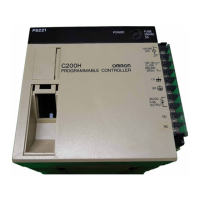
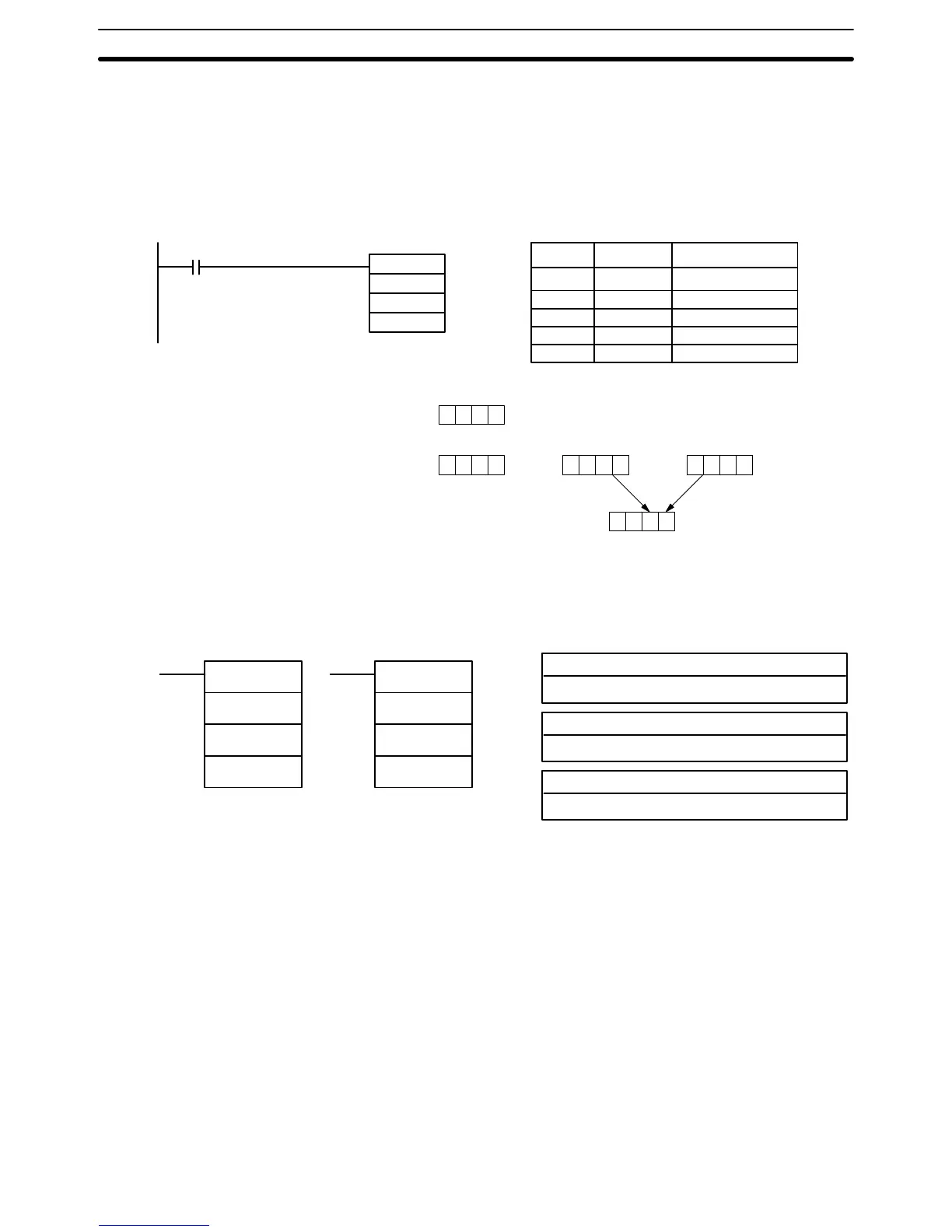